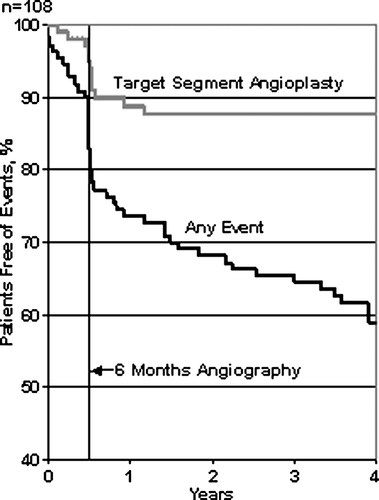Figures & data
Table I. Baseline characteristics
Figure 1. Kaplan Meier distribution of major adverse events Any event=the composite of death (cardiac and non-cardiac), coronary artery bypass surgery, any percutaneous coronary intervention (target segment and non-target segment) and myocardial infarction.

Table II. Number of major adverse events in patients with and without paired 6 months and 4 years angiograms
Table III. Angiographic baseline data in patients with and without paired 6 months and 4 years angiogram
Table IV. Angiographic results in patients with 4 years follow-up
Figure 2. The expected binary restenosis rate The curve to the right is the cumulative distribution of diameter stenosis in all patients in the DANSTENT study Citation10. In the curve to the left, the expected 4 years cumulative distribution of diameter stenosis, is calculated by subtracting the expected late restenosis regression of 6.15% for each patient. The binary restenosis rates (% of patients with ≥50% diameter stenosis) at 6 months follow-up and at 4 years follow-up are indicated with the arrows
